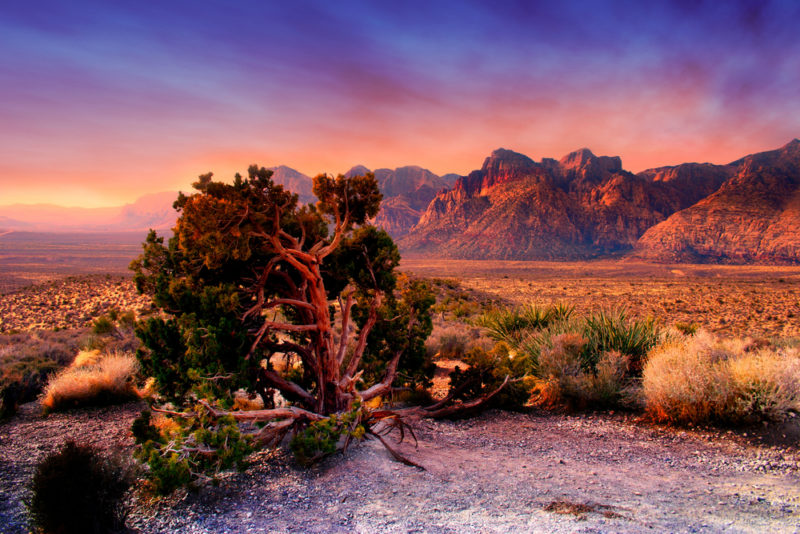Very few people who visit Las Vegas venture far from the glitz and glamour of The Strip; little do they know, Nevada is a state of great natural beauty and outdoor adventure. In fact, all you need to do is drive west on Charleston Blvd until the city abruptly ends.
The Red Rock Canyon National Conservation Area begins where Sin City ends, and Charleston Blvd becomes Nevada Highway 159. Drive the Red Rock Canyon Loop through the stunning red rocks just west of Las Vegas and from there back into town near Las Vegas suburb Enterprise.
If you like, you can set your GPS to the visitor center at 1000 Scenic Loop Drive, Las Vegas, and take the tour from there.
The Red Rock Canyon National Conservation Area
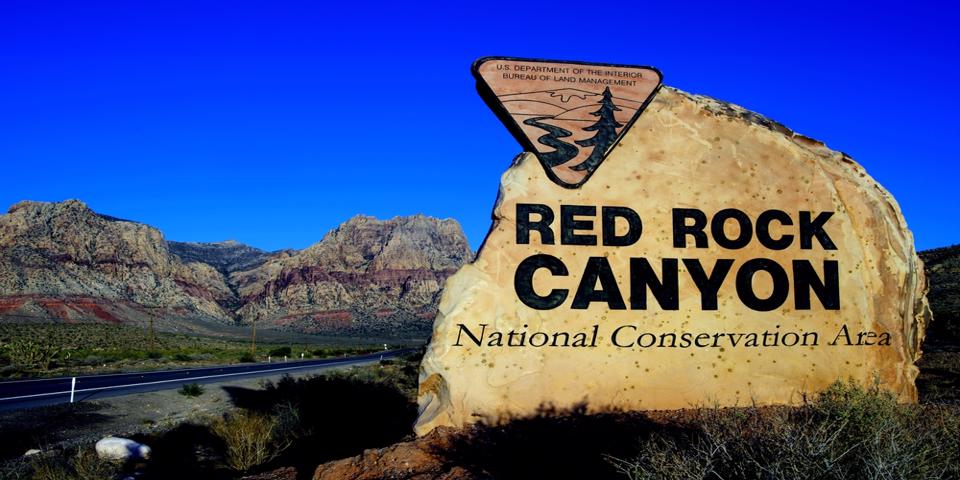
The unique and beautiful Red Rock Canyon is visible from the Strip, if you’re up high on top of one of the casinos. It’s 15-miles west and easily accessed from Charleston Blvd, a major east-west street that crosses the entire city.
Managed by the US Bureau of Land Management, the Red Rock Canyon National Conservation Area was established in 1967 and is protected as part of the National Landscape Conservation System. It encompasses 197,349 acres, and is famous for the Keystone Thrust, an array of large, colorful red rock formations. The walls of the rocks are close to 3,000 feet high, making them a favorite destination for rock climbers worldwide. The highest mountain in the conservation area is La Madre Mountain, at 8,154 feet.
In addition to showcasing canyons and mountains, the Conservation Areas showcases at least 600 different plants native to the habitat, including the magnificent Joshua tree, a variety of yucca, prickly pear, agave, black brush, and creosote. In the higher elevations, you’ll find juniper and scrub oak, with Ponderosa pine growing where the valley merges with the nearby Spring Mountains.
Wild burros and horses can be seen grazing the desert, and you’ll occasionally spot Desert bighorn sheep at the higher elevations. If you’re lucky enough to be there during a spring or summer rainstorm, you may even see tiny red-spotted toads emerging from their hibernation, into the temporary pools of water. The Conservation Area is also a protected habitat for the endangered desert tortoise; you can visit eight of these rare tortoises at the visitor center.
Things to do in the Red Rocks
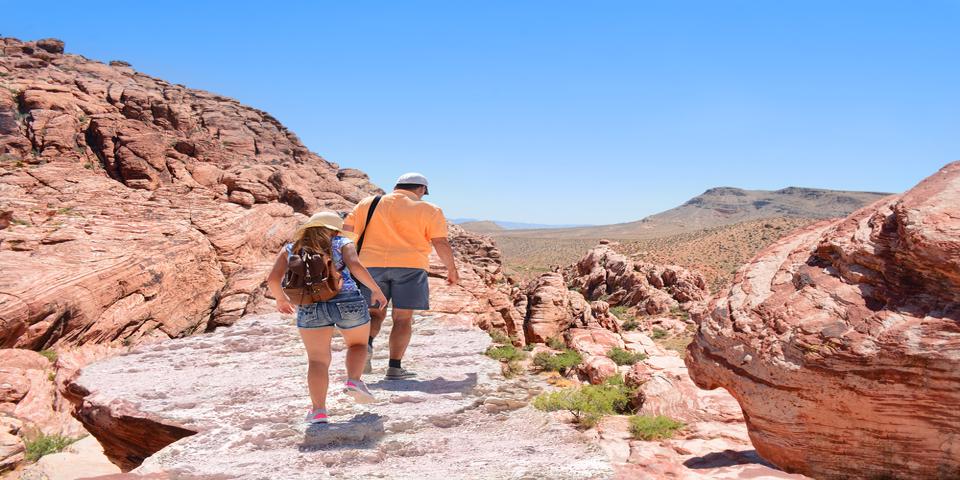
While bicycling through the Red Rocks is popular, it’s best done during the Area’s mild winters or springs. At other times, take an air-conditioned car to drive the scenic loop.
The first stop should be The Red Rock Canyon Visitor Center. Here you can explore the indoor and outdoor exhibits, learn more about plants, geology, and animals. Best of all, you can stop by the desert tortoise habitat and say hello to the resident tortoises. Finally, find out about the hiking trails and picnic areas, pick up a few maps, or visit the gift shop for a souvenir of your visit.
The simplest pleasure here is the 13-mile Scenic Drive through Red Rock. Just relax, drive, and enjoy the stunning scenery. There are plenty of beautiful places to stop along the way, and you’ll get lots of gorgeous nature shots of the exotic desert landscape.
If you’re lucky, you’ll see the Red Rock Canyon herd of wild horses, grazing among the Joshua trees. These beautiful animals are a remnant of the Old West, descendants of the horses our cowboy ancestors brought here. More commonly seen are small herds of burros, the descendants of hard-working pack animals brought here by gold miners. However, remember these are wild animals. Keep your distance and don’t attempt to pet or feed them. Feeding them encourages them to hang around the road, and they could be hit by a car or truck.
History
While this desert may seem barren, it’s actually awash in resources that have sustained both animal and human life for centuries.
The first people came to the beautiful Red Rock Canyon for its rich resources; water, plants, and animals that were not found in the surrounding desert could be found here. As many as six different Native American hunter-gatherer cultures have made Red Rock home over the millennia, from the Paleo-Indians 11,000 years ago to the Southern Paiute of modern times.
These people left many fascinating petroglyphs on the red rock walls, and you can see them today along the trails. In addition, you can see the agave roasting pits left by the early Native Americans scattered around Red Rocks.
Red Rock Canyon has also starred in several movies, including Bells of San Angelo starring Roy Rogers and his horse Trigger, and The Stalking Moon starring Gregory Peck.
Hiking Trails
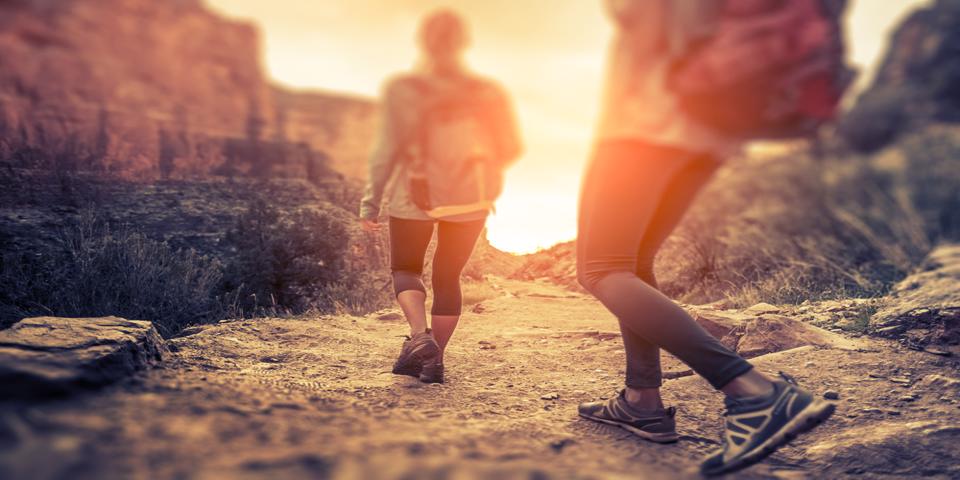
If you want to get more physical, the Canyon has 26 different hiking trails that can take you from the depths of the canyon to the highest elevations. The trails range from moderate to difficult. You must always bring plenty of water and be aware of potential dangers, such as falling rocks and rattlesnakes. Also, it’s best to hike with a companion and never alone.
Here are a few interesting trails, ranging from very easy to strenuous.
The Petroglyph Wall is a short, easy walk, less than ¼ mile long. You’ll go across a wash to a cliff covered with fascinating, 800-year old Native American rock art. It’s near the parking lot for the Willow Springs Picnic Area, so after you’re done admiring the rock art, you can rest and have a bite to eat.
The Keystone Thrust trail is a moderate, 2 ½ mile hike, that will take you along the stunning rock formations. Here the North American and Pacific continental plates meet, making the Keystone Thrust Trail one of the best ways to appreciate the geology of this unique and beautiful place.
The trail to Ice Box Canyon is considered strenuous; it’s a 2.2-mile hike that takes you to a cool, shady canyon with occasional waterfalls from December through April. The narrow canyon is constantly shaded, and the water pouring down from the mountain keeps it much cooler than the surrounding desert. Once you get there, be sure to rest and drink in the beauty of this hidden jewel.
That’s just three of the twenty-six trails; be sure to pick up a map at the visitor center, for all of the trails throughout the canyon.
Rock Climbing
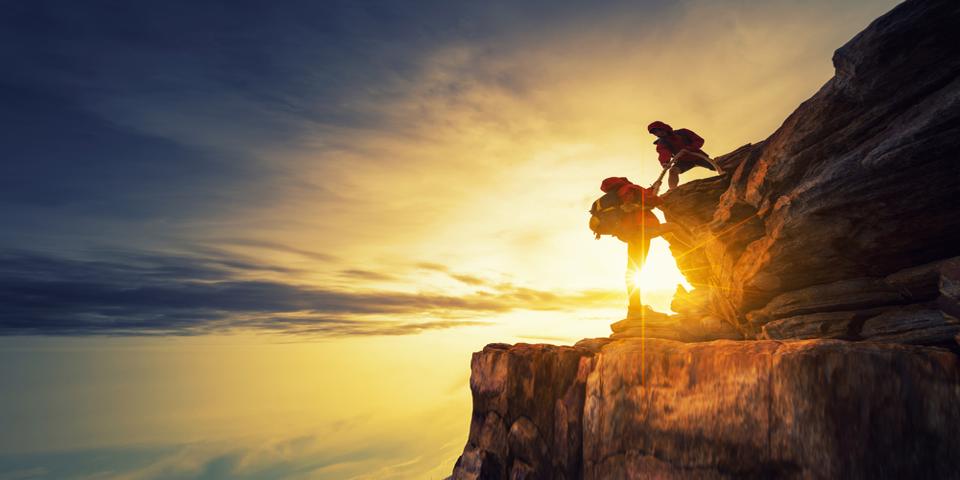
If there’s one thing Red Rock Canyon is known for, it’s rock climbing. Climbers flock here from all over the world to challenge the sheer rock walls. In fact, the walls here rival Yosemite, and Red Rock is considered one of the best rock climbing areas in the world.
The type of rock found here is Navajo sandstone, and the rock walls at the Sandstone Quarry and Calico’s 1 and 2 are where the climbing enthusiasts go. The black rock is considered the hardest, but keep in mind that it’s sandstone and can easily crumble; that means you need to be more careful than when climbing a granite wall. Likewise, it’s wise to wait 24 to 48 hours after a rainstorm to let the rock dry for safer climbing. You’ll need a permit to climb, which you can get through redrockcanyonlv.org.
Even if you’re not a climber yourself, it’s fun to watch these daring athletes scramble up the rock walls like Spiderman.
Biking
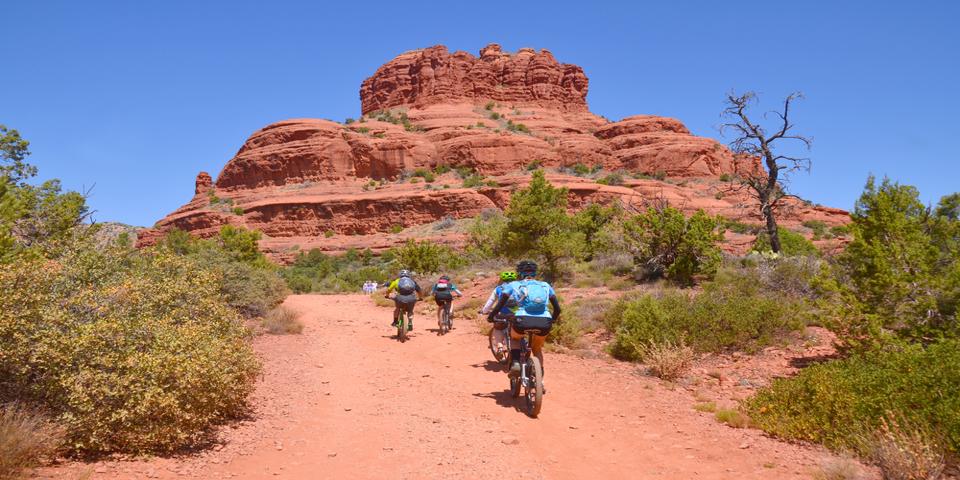
Bicycling in Red Rock Canyon is a great way to appreciate the desert’s amazing landscape. Bicycles are allowed on the Scenic Drive, paved side roads, as well as one designated mountain bike trails. However, bikes are not allowed on the hiking trails. Furthermore, E-bikes are not allowed on the mountain bike trails; they’re only allowed on motorized-vehicle roads.
Mountain biking through the wilderness is a great way to appreciate the beauty of this exotic desert landscape. But remember to stay on the trails in order to preserve the fragile desert plant life and habitat. Likewise, don’t disturb any wildlife you may encounter.
Camping
The Red Rock Canyon Campground, two miles east of the Visitor Center, is a popular base camp for climbers, hikers, bikers and nature lovers. If you’d like to spend a desert night under the stars around a campfire, this is the place!
However, this is a popular campground, and you’ll need to make reservations at recreation.gov well in advance of your trip. It’s $20 a night for RV sites, $10 for walk-up tent sites, and $60 for group sites. This is primitive camping at its best; while there are vault toilets and water here, there is no electricity, no showers, and no RV dump station.
You don’t have to go far from Las Vegas to experience the grandeur of the Mojave Desert. While most people think of Utah and Arizona as dramatic, red rock desert destinations, Nevada has its share of beauty. You can spend just a few hours driving the Scenic loop, or you could spend days here, camping out and exploring every trail and canyon. How much time you spend in this blissful desert landscape is entirely up to you.

